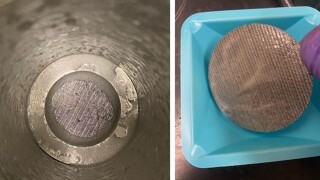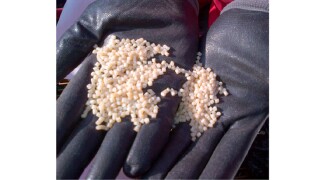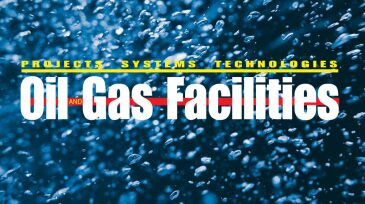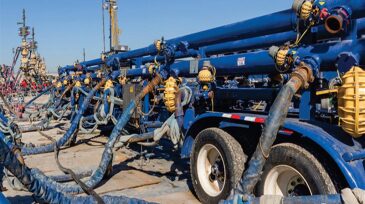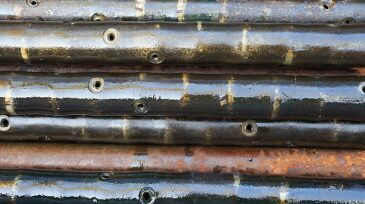Fracturing/pressure pumping
Technology developers expect the tight-oil industry to give lightweight proppants another look after the Permian Basin’s biggest operator becomes an adopter.
This paper describes development of a high-temperature water-based reservoir drill-in fluid using a novel synthetic polymer and customized with optimal chemical concentrations and sized calcium carbonate.
In this case study, a geomechanics-based approach was used to create bridging and sealing at the fracture aperture using a biparticle self-degradable lost-circulation-fluid system.
-
This paper analyzes water production from horizontal shale wells in five sections of the Wattenberg field in northeastern Colorado. Models were developed for these wells for future water-production prediction and a spatial analysis was also conducted.
-
Kerogen Exploration is excited about the Vista Grande project, a Woodford Shale play in a west-Texas Permian sub-basin that offers further targets lying above in the Barnett Shale.
-
A new spread of stimulation equipment from the world’s largest service company demonstrates the latest significant step to creating a more automated oilfield.
-
In North America’s most active shale fields, the drilling and hydraulic fracturing of new wells is directly placing older adjacent wells at risk of suffering a premature decline in oil and gas production.
-
A closer look at technological and mechanical solutions being developed to limit exposure to respirable silica dust during hydraulic fracturing operations in the wake of US government regulations.
-
Technology that allows researchers to see stress forming inside rock samples may help unravel some of the mysteries associated with fracture behavior.
-
The Austin Chalk play could go through a revival if the industry can view the formation through “a fresh set of eyes,” says EnerVest’s Tony Maranto.
-
Early testing suggests that grains of proppant so small they need to be measured in microns can add production by slowing the notoriously rapid declines in unconventional wells.
-
With newly discovered fields and the extension of existing areas, the challenges related to reservoir heterogeneity, tight rock, layered systems, and field maturity have led to innovative ideas and to testing and application of technologies.
-
Recent studies have found that the viscosities of borate gels at actual downhole pressure conditions may be 80% less than those from standard high-pressure/high-temperature rheometer measurement (which uses 400-psi top pressure).


